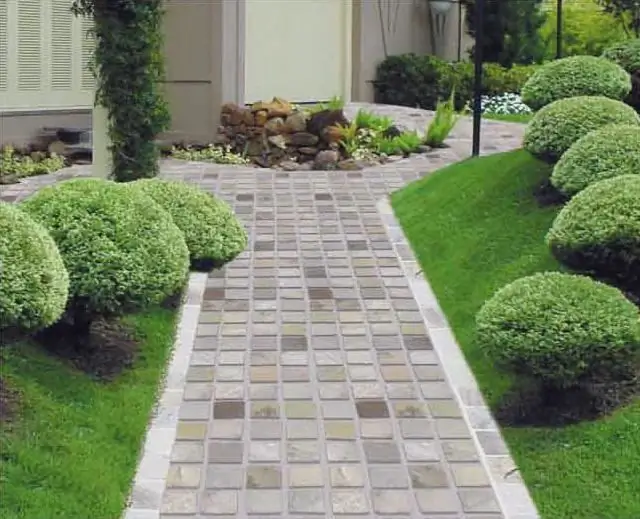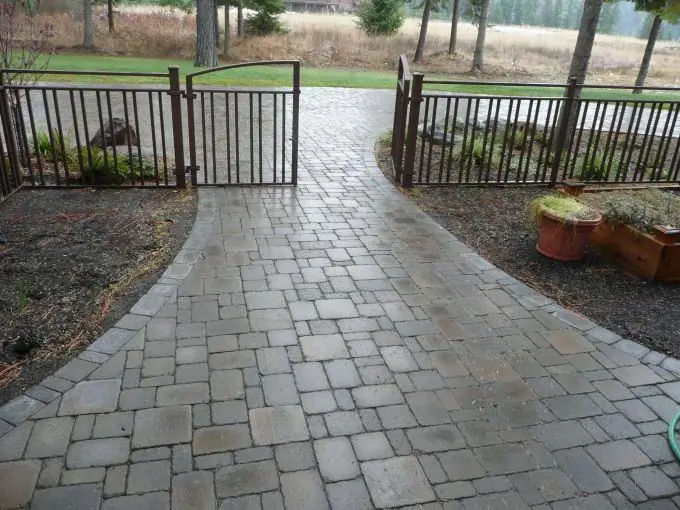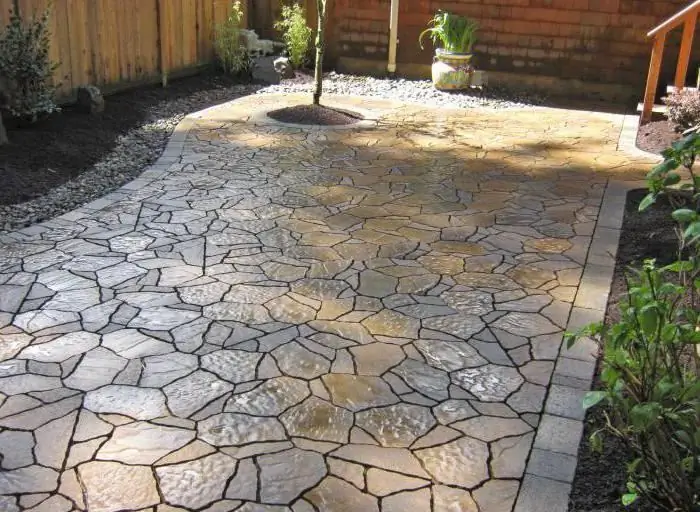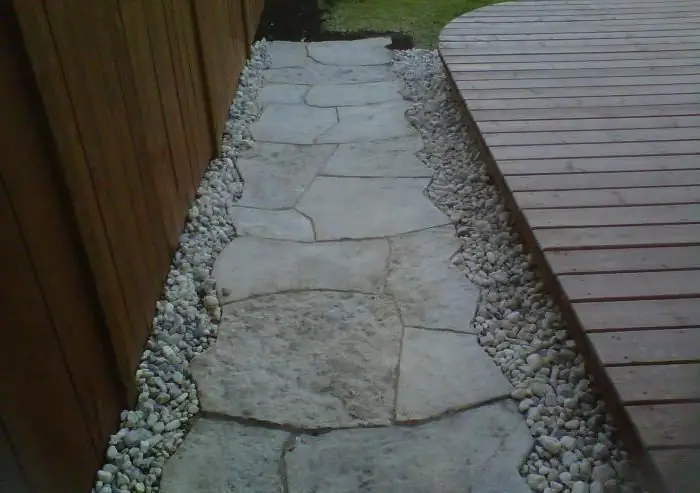There are not many materials that can be used to cover streets, paths, playgrounds and other areas that would be distinguished by reliability and quality. One of them is a paving stone.
Production Features
The material is made from the following materials:
- Natural high-strength stone, which is cut into elements of the same size and shape.
- Ordinary concrete. Moreover, in order to obtain a material with certain characteristics, various additives can be used.

Of course, the cost of natural stone is much higher than artificial, but if you take into account the time of operation of the first and its unique properties, it becomes clear that the money spent will pay off with many years of operation and excellent aesthetic characteristics of the created surface. That is why everyone who can afford it or wants to see only natural materials on their site most often uses natural stone. It will be discussed further.
Scope of application
You can use paving stone for:
- Devices of sidewalks, alleys, paths.
- Formation of solid surfaces in the area of squares, garden gazebos, recreation areas, parks.
- Creating access roads to specialized parking lots, private garages.
- Arrangement of space around high-rise buildings, cottages, office buildings, sanatoriums, hotels and other facilities.
- Covering yards in ordinary dachas and near private houses.

Material advantages
The best option for making a coating that has an attractive appearance, strength and durability is paving stone. Photos better than any words demonstrate the beauty of finished coatings from this material. It will look great everywhere, regardless of the type of building and its purpose.
Other benefits include:
- Variety of shades, making it much easier to match coverage to a particular home or landscape.
- Resistant to all temperatures, so the material can be used in any region.
- The small thickness of the elements, which greatly facilitates their installation.
- The shapes and sizes of paving stones can be any, even non-standard, if necessary to create complex landscape elements.
- Durability. The service life of coatings is calculated in decades.
- Strength. No precipitation, UV rays or other atmospheric adversity can harm the finished coating.

Waysstyling
Paving stone can be laid in several ways. Their choice depends on the purpose of the coating:
- For arranging surfaces in places with low load, it will be enough to use to create a cushion of sand, crushed stone, gravel.
- If work is underway to equip sites where vehicles or a large number of people will move, in order to protect the coating from destruction, it is necessary to create additional protection - use crushed stone and cement-sand mortar to make the base.
- If a road is being built along which large flows of transport, including heavy ones, will move forward, in order to get a reliable surface, the foundation for the paving stone should be concrete mortar.

Styling technology
Installation works consist of several stages, and each of them must be done with the highest quality:
- Marking the territory. Even before a paving stone is purchased, you need to carefully examine the area in order to identify objects that will interfere with work (trees, a gazebo, a canopy) and decide what to do - remove them or bypass them. Next, you need, using pegs and a rope, to mark the boundaries of laying.
- Removing the top layer of soil, because it has a porous structure and over time, problems associated with surface deformation will begin. The depth to which you need to remove the soil depends on its specifics. In addition, the soil must be removed at a slight angle so that water from precipitation candrain off the surface and not stagnate. If this is not done, then the moisture will stagnate, and the stone will sag.
- Soil compaction. This can be achieved by using a vibrating plate for large areas, or by hand compacting in smaller areas.
- Creating an interlayer using natural materials (gravel, crushed stone). The minimum layer thickness is 10 cm. For open areas, it is best to use crushed stone - this will make an excellent drainage system.
- Using a mortar of sand (1 part) and cement (3 parts). At the same stage, it is necessary to lay the borders in order to get a whole composition.
- Creating a 10 cm thick sand cushion. It is advisable to use sand without clay, river sand is best. The created layer must be compacted.
- Directly laying paving stone. To put each element in place, move it if necessary, you can use a rubber mallet. In this case, you need to act carefully, without too vigorous movements.
- The created surface should be swept with fine-grained sand to fill all existing gaps.






